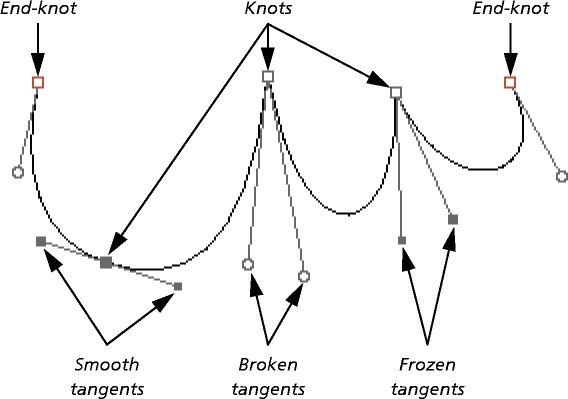An introduction to paths
A path is made up of curved segments that pass through knots. A path can be closed (i.e. it forms a loop) or open. If a path is open, we call the knots at either end of the path the end-knots.
Each knot has tangents. These set the direction followed by the segments passing through the knot. The longer the tangent is, the more strongly the segment follows its direction, before curving away towards the next knot. Tangents can behave in a number of different ways:
- Smooth tangents are the default type used when you create a path. They lie at 180 degrees to each other, and so create a smooth curve through their knot. As you move one tangent, so the other moves to keep them in a straight line.
- Broken tangents are independent of each other. As you move one tangent, the other stays unaltered. They are used to make sharp points or loops.
- Frozen tangents are ones that keep a fixed angle between themselves. As you move one tangent, so the other moves to keep the angle the same.
- In fact, a smooth tangent is merely a frozen tangent where the fixed angle is 180 degrees.
Frozen tangents (including smooth tangents) have small solid squares at their end, whereas broken tangents have small outline squares at their end.

Paths can also have keyframe markers on them. These are used to mark the position on a path at a particular keyframe; for example, when you are using a path to set the movement of a character, or to set a camera path (see Using path mode).